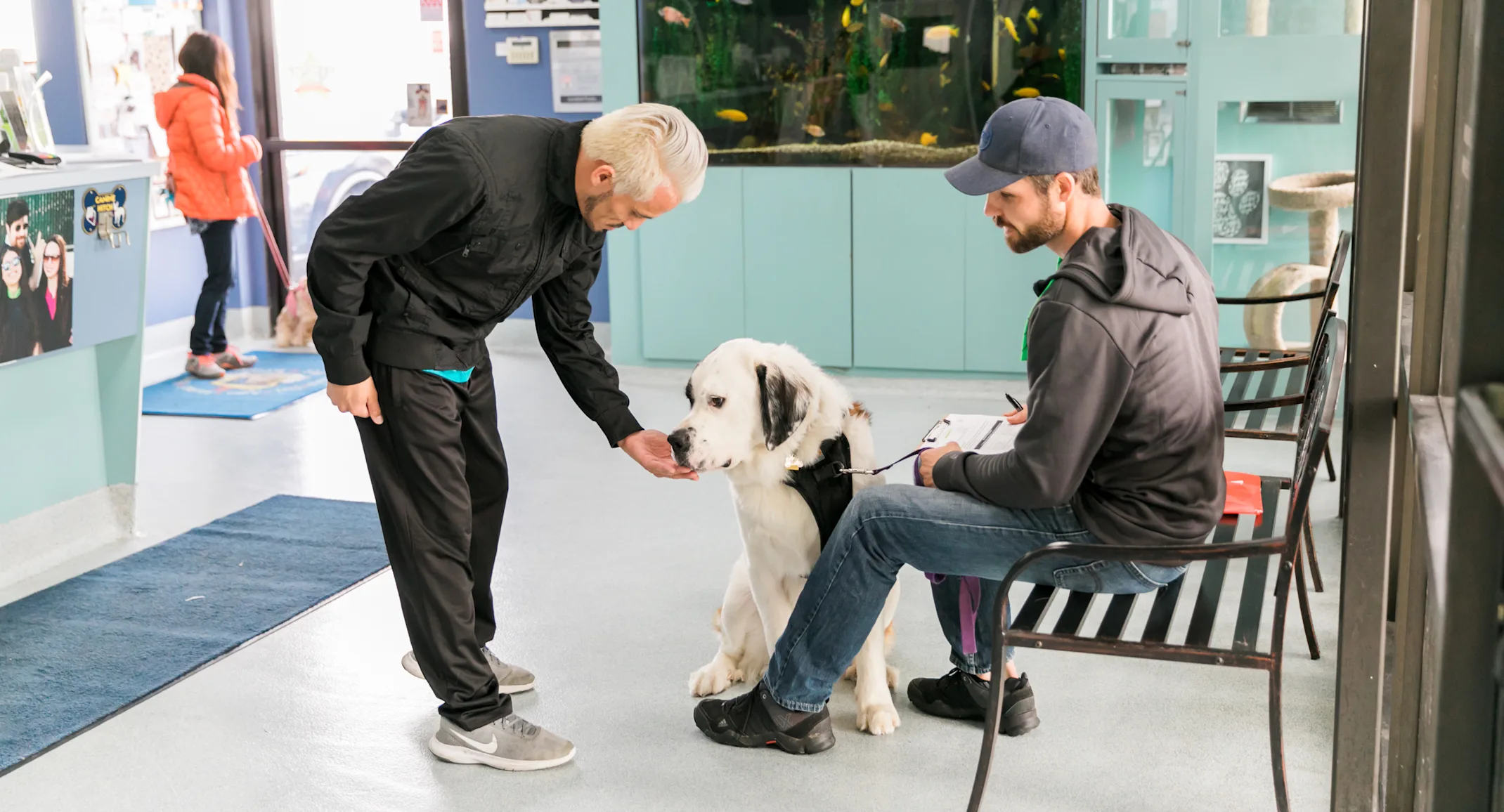7 Tips For a Stress-Free Veterinary Visit
Tips and Tricks

#1: Schedule your veterinary appointment strategically
When scheduling your pet’s veterinary appointment, ensure you will not feel rushed. Our pets can sense our emotions, and when we feel stressed, they do too. Anxious pets often feel less fearful at early morning appointments when the clinic is quieter. Factor in plenty of travel time, plus time for a celebratory activity after the appointment, setting aside time for you and your pet to decompress.
#2: Plan for potential pet stressors
Before your pet’s veterinary appointment, think through potential anxiety-producing situations, and come up with potential solutions. For example, if your dog is fearful of men, request a female technician. If your cat is terrified of metal surfaces, bring a towel or blanket for them to sit on while on the examination table. To ensure your pet’s visit is as stress-free as possible, alert the veterinary staff if they have specific fears.
#3: Practice handling your pet at home
Handle your pet at home to ensure they will be comfortable when veterinary professionals examine them from head to toe during their appointment. Begin handling your pet at a young age to teach them to accept touch as a positive experience by distracting them with a high-value treat as you manipulate their various body areas, including their ears and feet. Practicing this often can help make your pet’s veterinary visits much easier
#4: Ensure your pet is comfortable in their carrier
A carrier is your pet’s safest place during transport, and in the veterinary clinic lobby. Your pet likely balks at being confined, but you can help them associate their carrier and kennel with a positive experience by feeding them inside. In addition, always keep the carrier open and accessible to your pet to prevent them from associating their transport gear only with going to the veterinarian.
#5: Exercise your pet before their appointment
Give your pet plenty of exercise before heading to the veterinary clinic. Ensure your pet burns a lot of energy, so they feel tired and relaxed when you arrive at their veterinary appointment. If you have little time to spare, skip the walk, and play a game of fetch before leaving—any activity that gets your pet moving will improve their mood. A tired pet will be much less anxious at the veterinarian.
#6: Bring reinforcements for your pet
In an unfamiliar setting, your pet will feel more comfortable being surrounded by familiar objects, so bring along their favorite toy or blanket. In addition, bring treats your pet loves, and if possible, avoid feeding them before the appointment so they will focus on the delicious treats you offer them at the clinic, rather than their fear. Many pets are extremely anxious in the veterinary clinic, so consider putting your pet in an adjustable wrap, such as a ThunderShirt, which applies constant, gentle pressure to their body. If your pet is usually extremely fearful at their appointment, your veterinarian may prescribe anti-anxiety medication to help soothe their anxiety. If you are concerned your stressed pet may react inappropriately, put them in a soft muzzle, which can reduce their emotional distress, and protect veterinary staff.
#7: Prepare questions for your veterinarian
To ensure you and your pet get the most of their veterinary appointment, write down your health questions ahead of time, and bring the list with you, so you can raise these concerns with your veterinarian. Because you will be focused on keeping your pet calm and comfortable during their appointment, you may forget what you had hoped to discuss unless you have the topics in writing.
With some planning and preparation, you can help your pet feel calm and comfortable at their next veterinary visit. Use this locator to find a local practice appropriate for your pet’s health care needs.
